Ned Vena
Spirals
March 19 – April 17, 2021
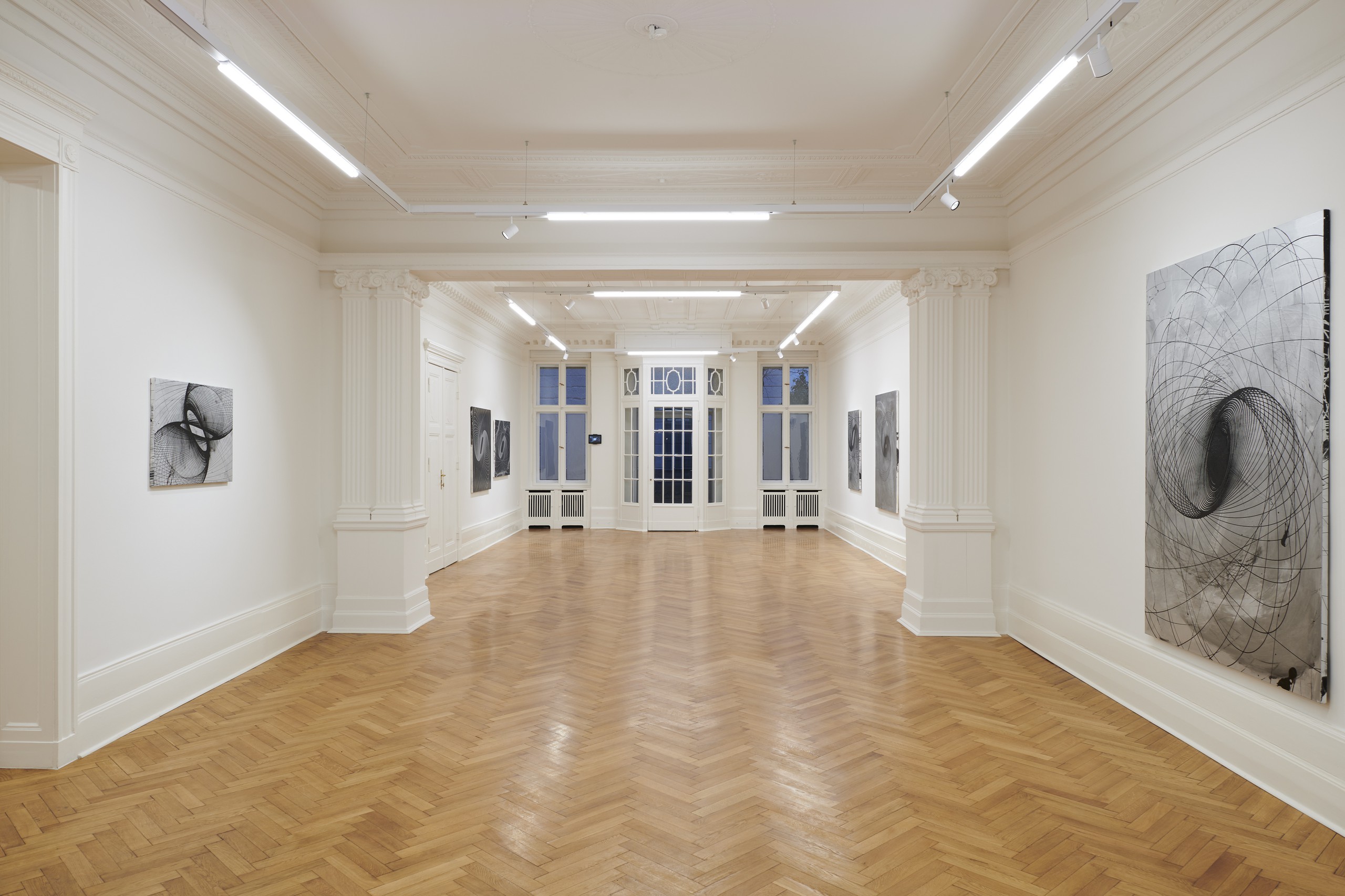
Installation view, Spirals, Société, Berlin, 2021
A commonality that links Vena’s aesthetically diverse bodies of work is the artist’s resolute exploration of questions of reproduction and replication. In the case of his recent Tattoo Paintings, Vena quite literally reproduces himself by using an iPhone camera to zoom into the body and extract details of his tattoos. By appropriating his own body, Vena offers himself to us as an image. His newest series of works, all made in 2020, consist of paintings on linen and Yupo paper.
Spherical motion lies at the very heart of creation. Vena uses the motif of the “spiral” to establish a relationship between the formal qualities of his paintings and the popular associations sparked by the term, which simultaneously encompass the mathematical perfection of a whirlpool, the intuitive, ecstatic states of spiritual devotion, and the destructiveness of the downward spiral. The spiral vortex radiates outwards, while simultaneously drawing itself inwards—infinitely and eternally. Vena’s paintings on linen take the form of crisp, perfect vortices—neat geometric constructions layered atop washy swathes of grey and white monochrome. Others, executed in enamel paint on Yupo paper, have a more frenetic, darker feeling: bits of graffiti peek through thin black lines interrupted by thick patches of silver paint. Although fragments of spirals reveal themselves in these works, bereft of the perfection we typically expect from spirals, whether appearing in the natural world or a math textbook, these works somehow seem closer to how an emotional spiral feels: layered, complicated, messy.
To make his spirals, Vena created a pendulum by suspending a container of paint from the ceiling with a string, which was then swung in a circular motion. Vortex-like spiral patterns ensued from the paint dripping onto the surface below. The internet teems with examples of such paintings: videos by Sunday painters on YouTube, tutorials by Martha Stewart, archival photographs of Max Ernst with his own pendulum works. As Vena himself notes in a text that he wrote to accompany the exhibition, “It reminded me of so-called “Zombie Formalism,” which I have been involved with, and I thought that was funny. Once put into motion they paint themselves. Surrender to forces beyond my control produces the paintings.” Of course, there is a long history of artists painting with objects or delegating the act of painting to a proxy. Such experiments were typically inspired by an interest in the convergence of esotericism and mathematics, or simply a desire to shake things up. Yet Vena’s approach seems less an act of violence—think of de Saint Phalle shooting paint or Shimamoto hurling paint filled vases at the canvas—than an act of surrender. If we think of Harold Rosenberg’s writings on action painting, in which he defines the canvas as “not a picture, but an event” and “an arena in which to act,” perhaps Vena’s spirals are spaces not to act—a state of pure flow. This going with the flow can’t help but reflect in some way on the year in which they were made, a time that served us best when we just sat back and let it run its course and didn’t try to intervene too much. A time perhaps experienced as a spiral, a groundhog’s day, an ever-cycling sameness. Yet within such repetitions lie the possibility of catharsis, of release.
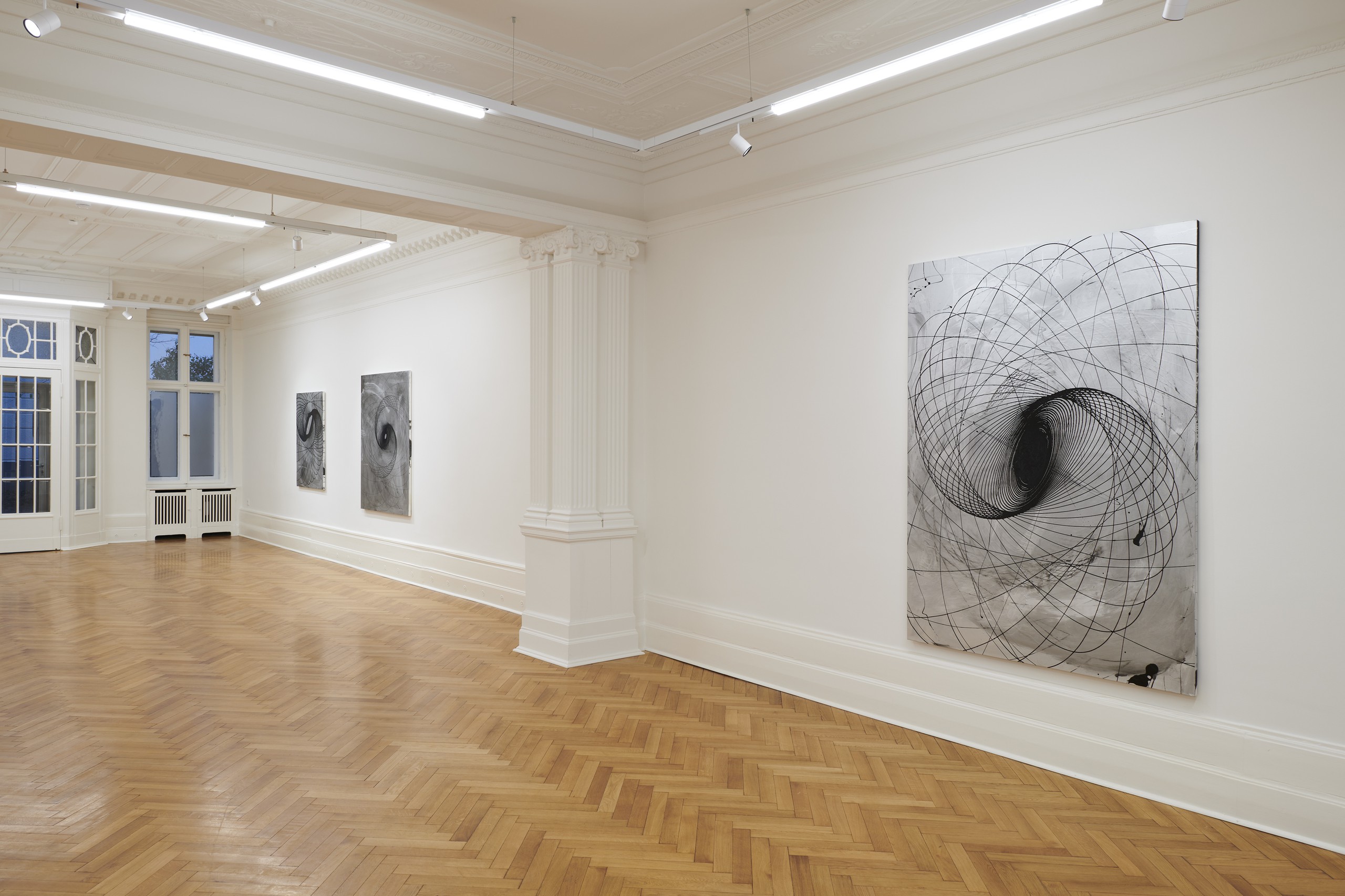
Installation view, Spirals, Société, Berlin, 2021
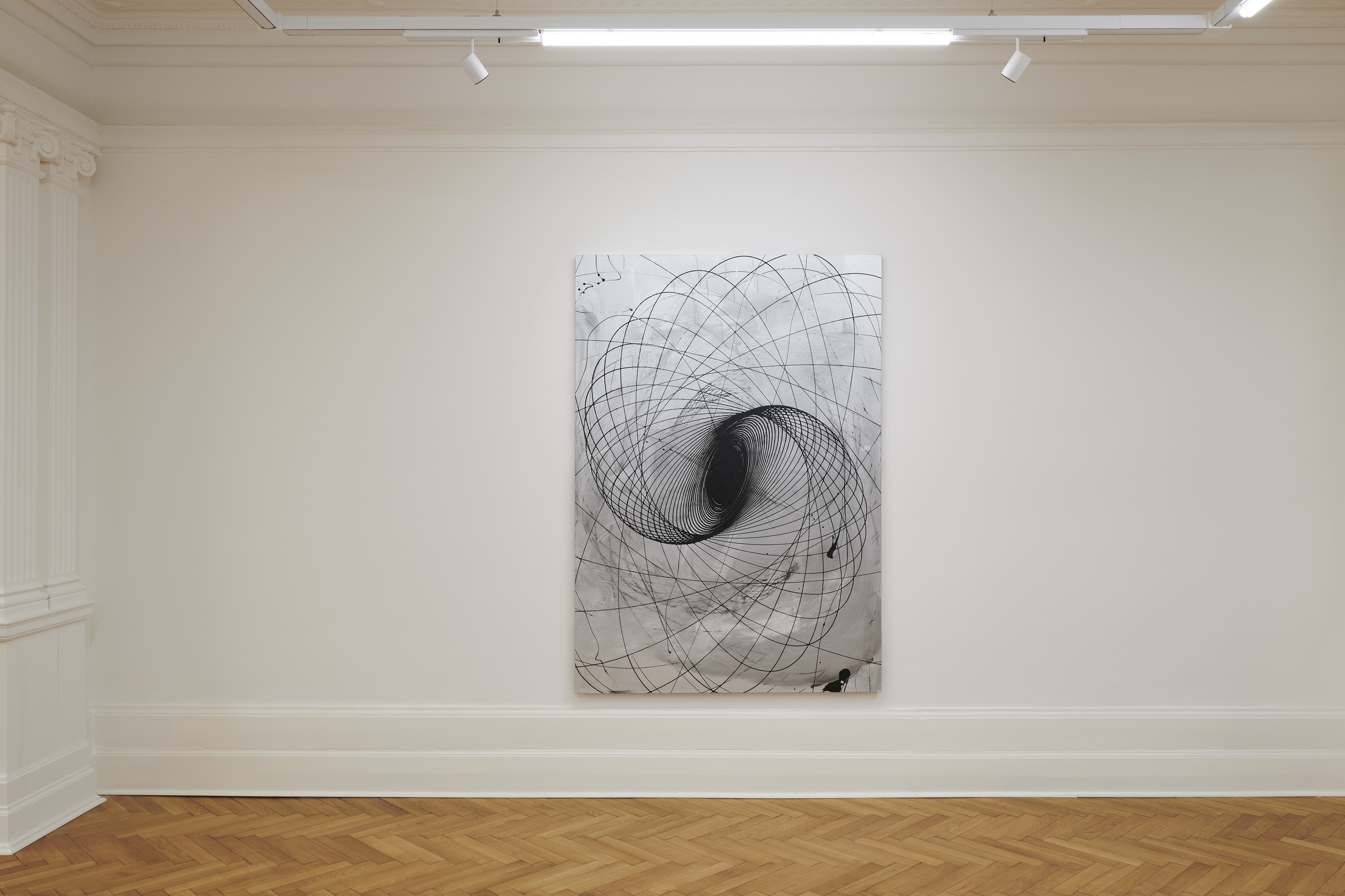
Installation view, Spirals, Société, Berlin, 2021
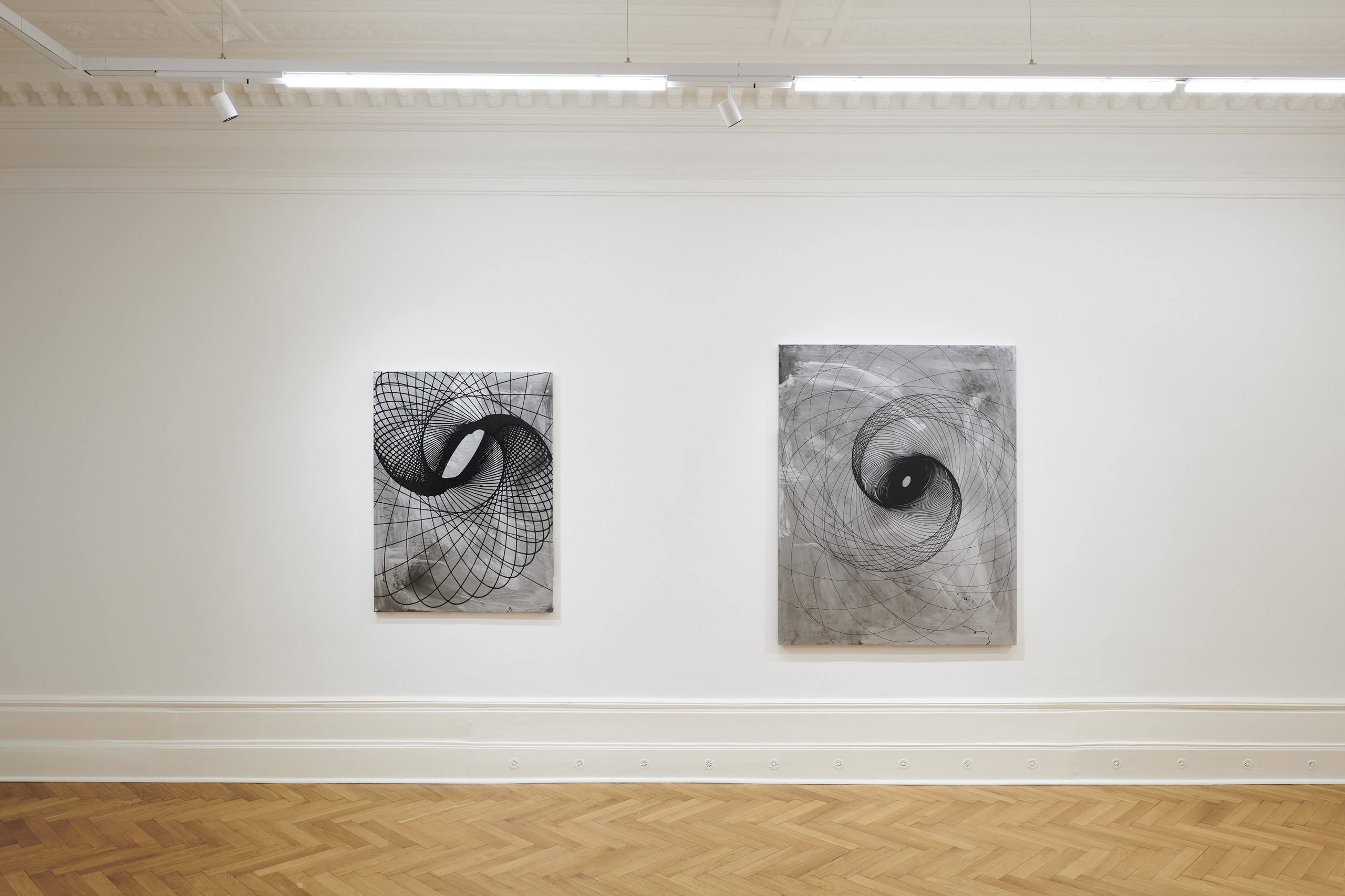
Installation view, Spirals, Société, Berlin, 2021
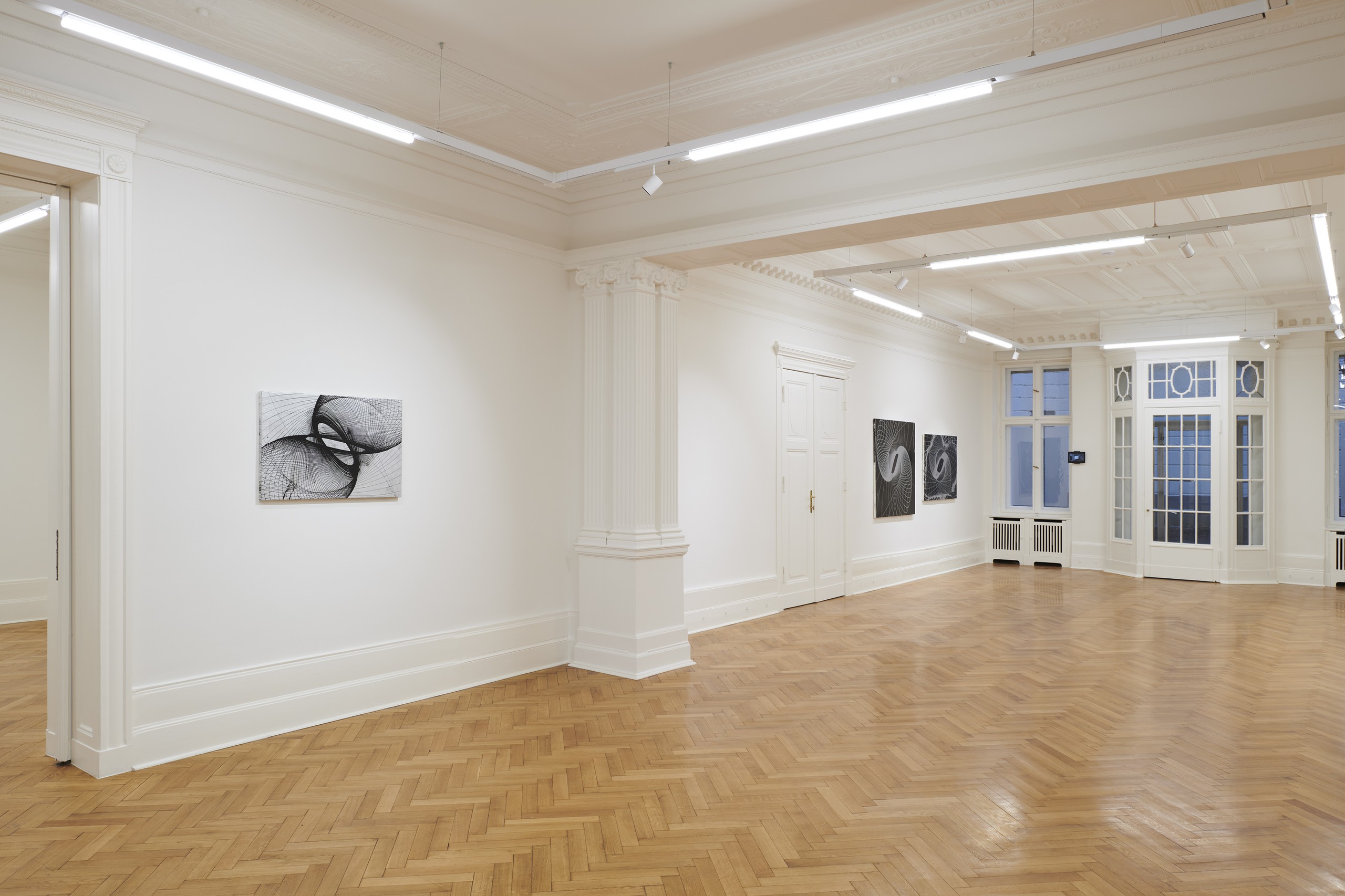
Installation view, Spirals, Société, Berlin, 2021
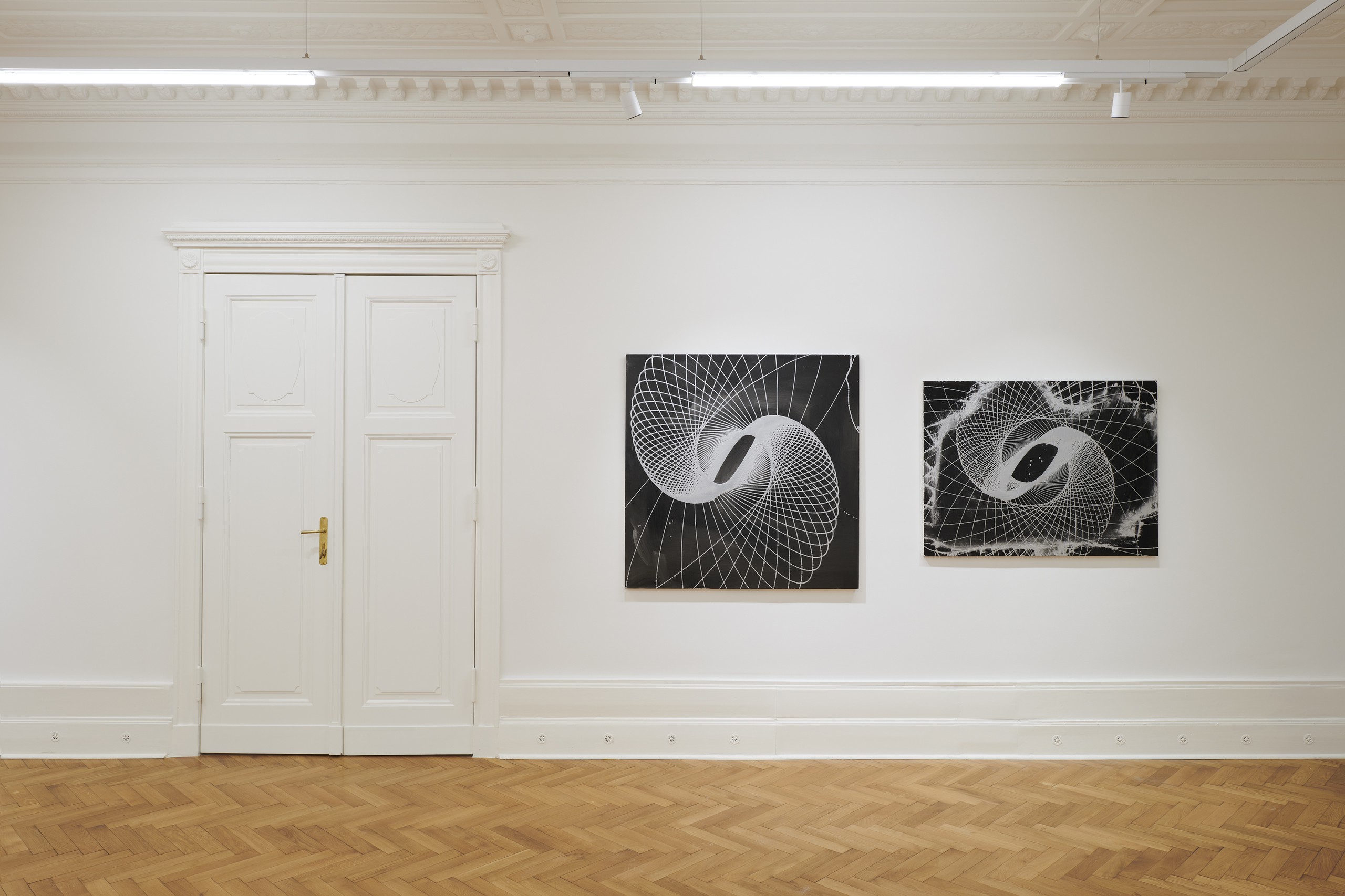
Installation view, Spirals, Société, Berlin, 2021
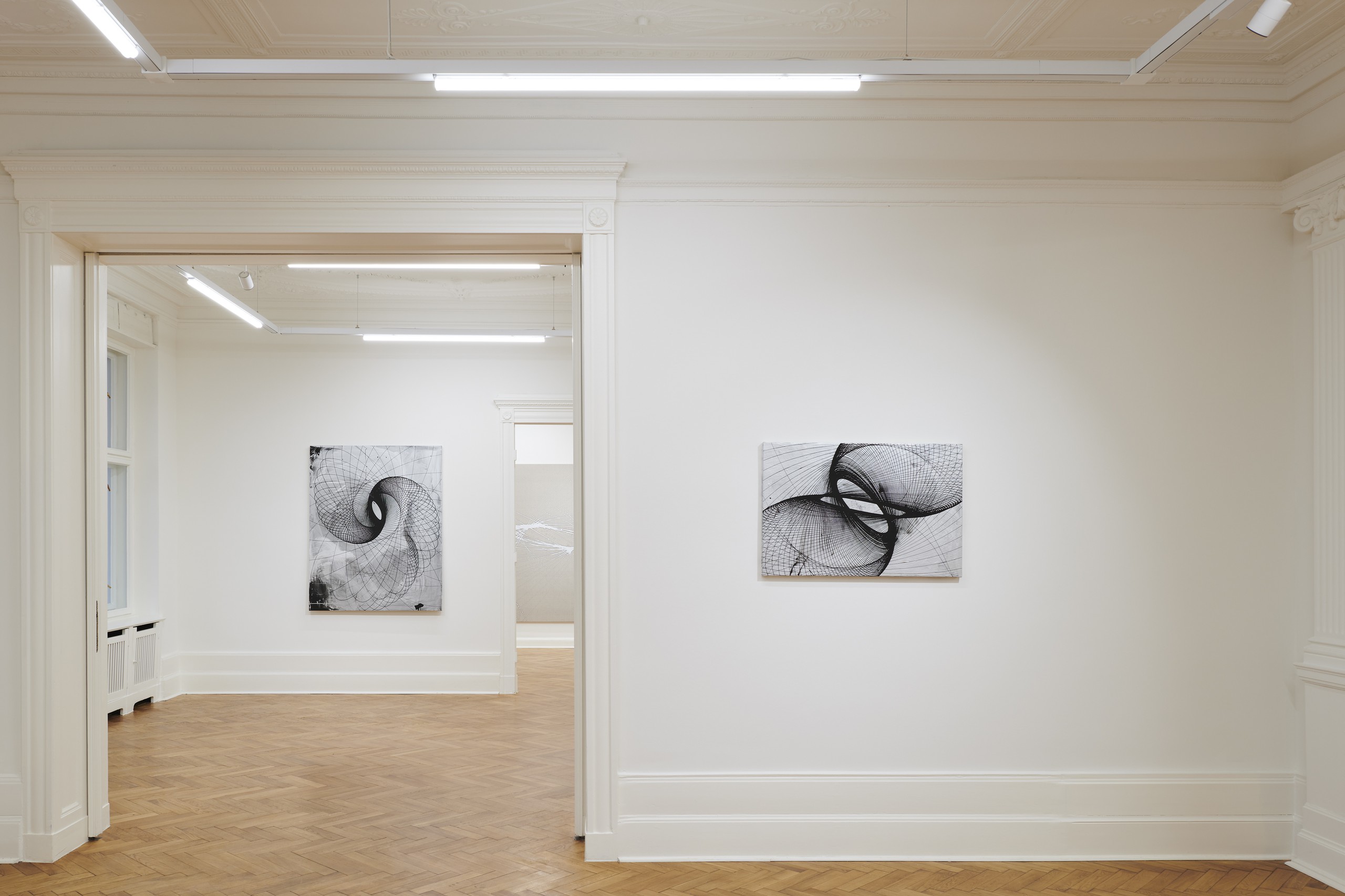
Installation view, Spirals, Société, Berlin, 2021
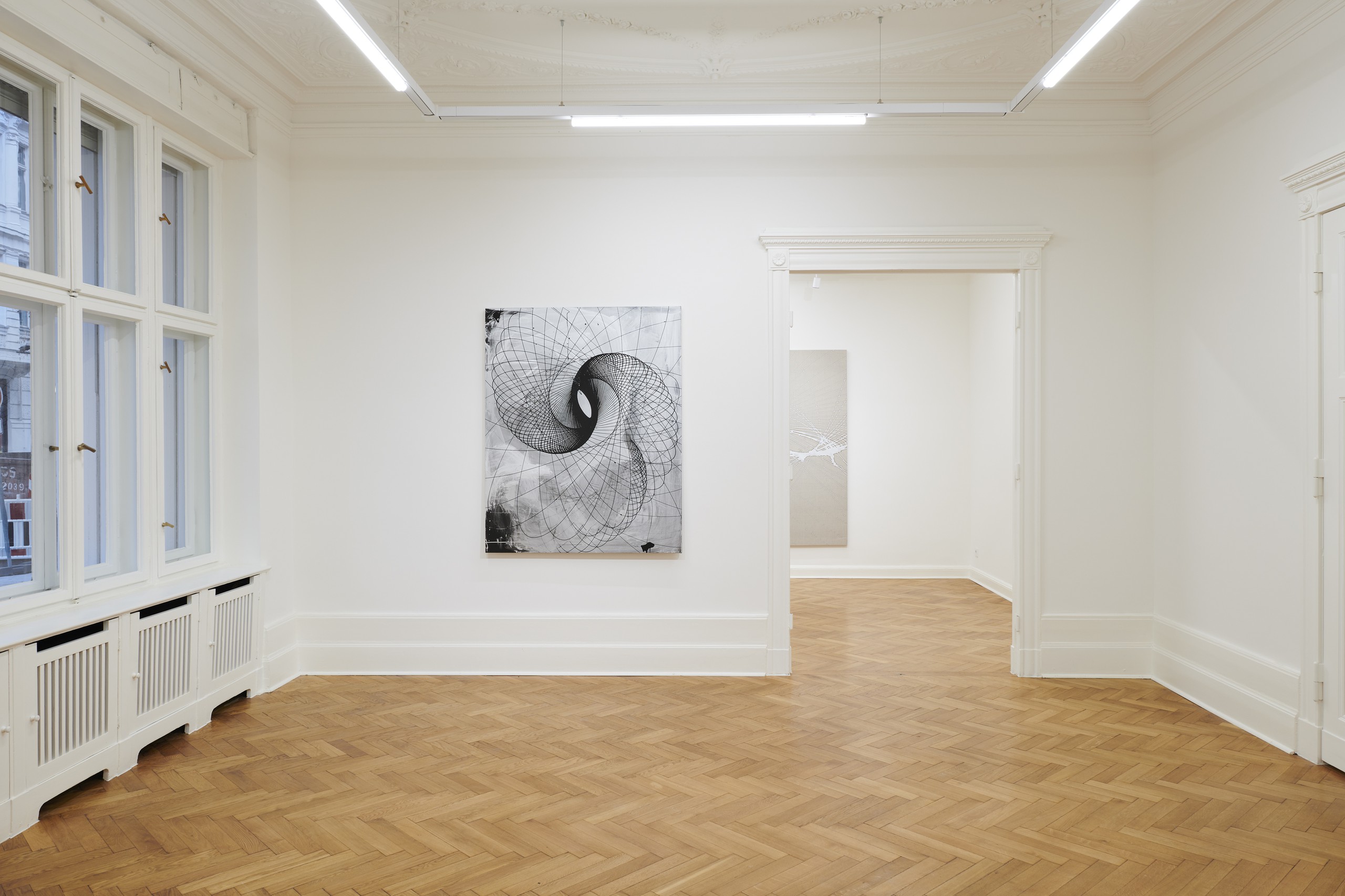
Installation view, Spirals, Société, Berlin, 2021
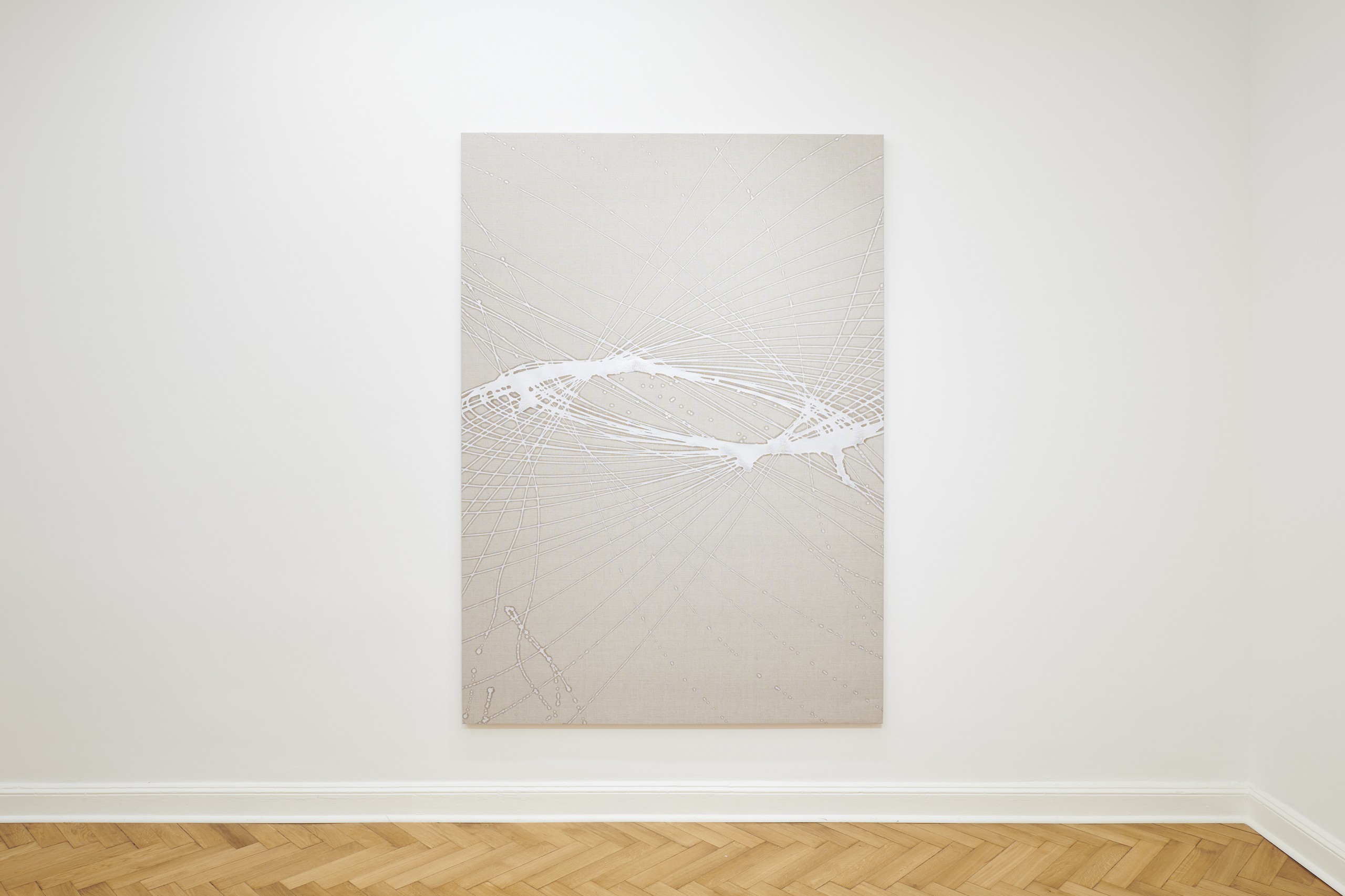
Installation view, Spirals, Société, Berlin, 2021